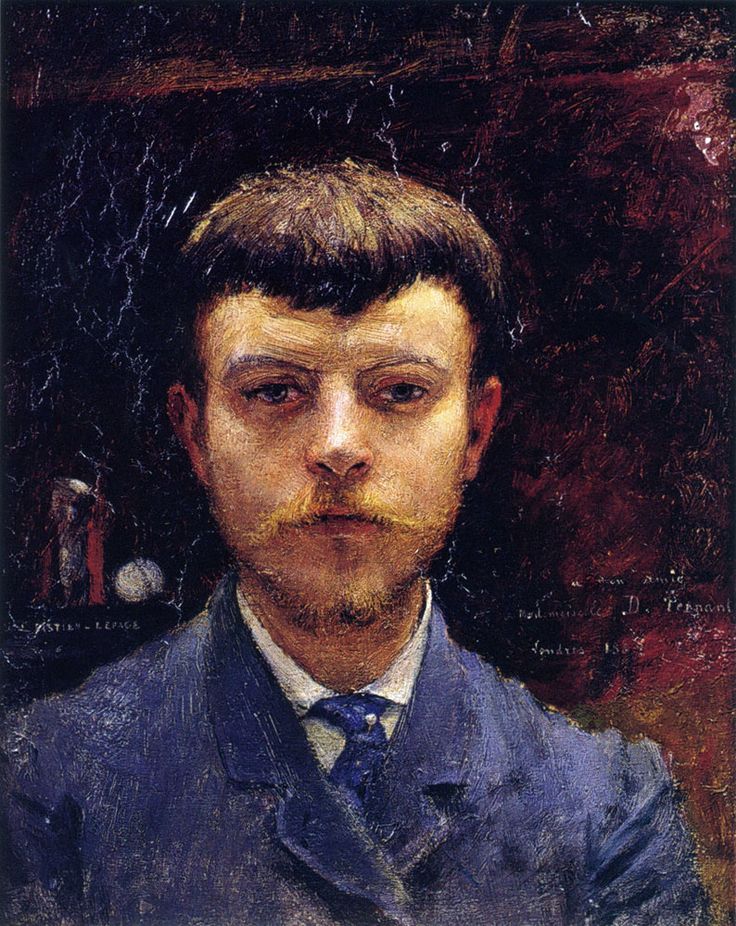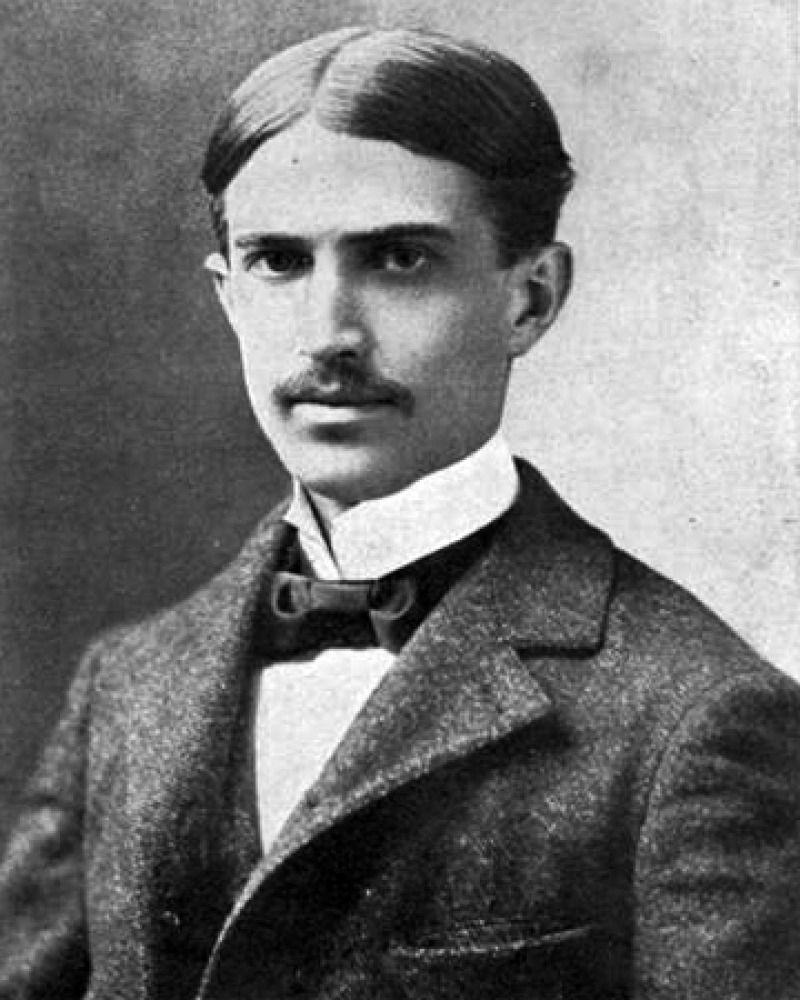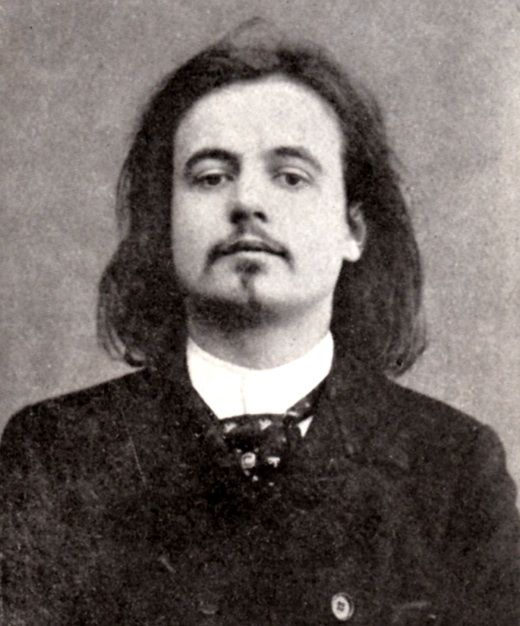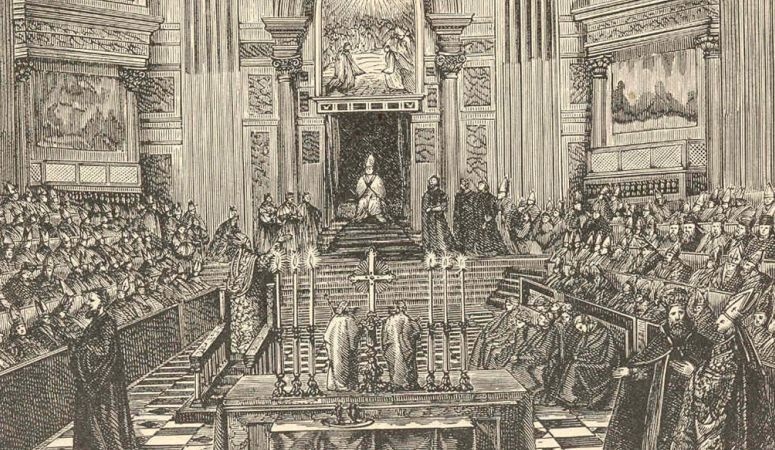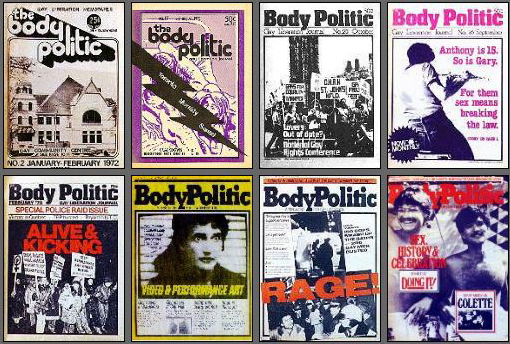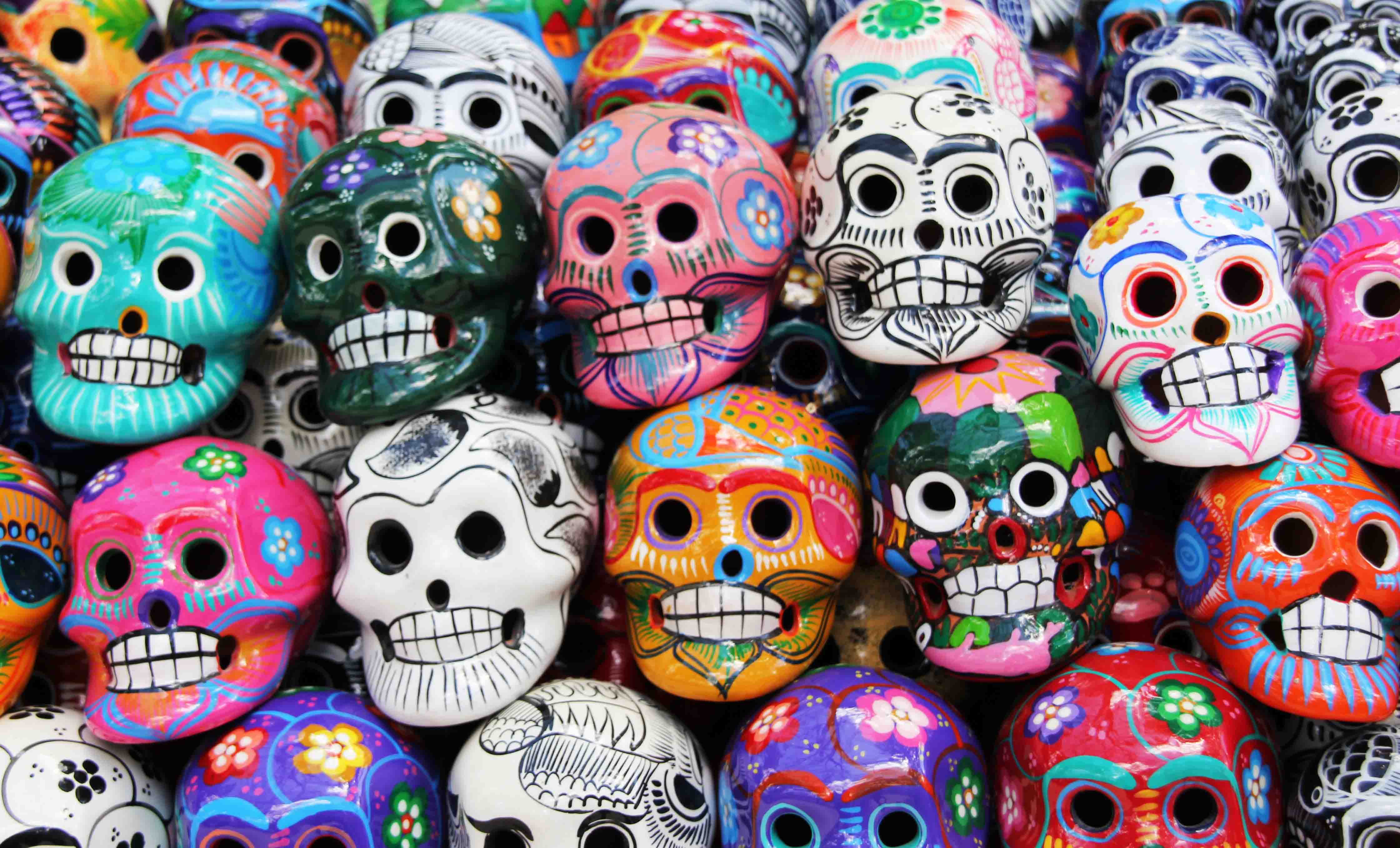|
Gay Wisdom for Daily Living brought to you by White Crane Institute ͏ ͏ ͏ ͏ ͏ ͏ ͏ ͏ ͏ ͏ ͏ ͏ ͏ ͏ ͏ ͏ ͏ ͏ ͏ ͏ ͏ ͏ ͏ ͏ ͏ ͏ ͏ ͏ ͏ ͏ ͏ ͏ ͏ ͏ ͏ ͏ ͏ ͏ ͏ ͏ ͏ ͏ ͏ ͏ ͏ ͏ ͏ ͏ ͏ ͏ ͏ ͏ ͏ ͏ ͏ ͏ ͏ ͏ ͏ ͏ ͏ ͏ ͏ ͏ ͏ ͏ ͏ ͏ ͏ ͏ ͏ ͏ ͏ ͏ ͏ ͏ ͏ ͏ ͏ ͏ ͏ ͏ ͏ ͏ ͏ ͏ ͏ ͏ ͏ ͏ ͏ ͏ ͏ ͏ ͏ ͏ ͏ ͏ ͏ ͏ ͏ ͏ ͏ ͏ ͏ ͏ ͏ ͏ ͏ ͏ ͏ ͏ ͏ ͏ ͏ ͏ ͏ ͏ ͏ ͏ ͏ ͏ ͏ ͏ ͏ ͏ ͏ ͏ ͏ ͏ ͏ ͏ ͏
|
|
||||
| This Day in Gay History | ||||
November 01Born 1848 - JULES BASTIEN-LEPAGE (d: 1884), was a French naturalist painter born on this date in the village of Damvillers, Meuse, and spent his childhood there. Bastien's father grew grapes in a vineyard to support the family. His grandfather also lived in the village; his garden had fruit trees of apple, pear, and peach up against the high walls. Bastien took an early liking to drawing, and his parents fostered his creativity by buying prints of paintings for him to copy. Bastien-Lepage's first teacher was his father, himself an artist. His first formal training was at Verdun, and prompted by a love of art he went to Paris in 1867, where he was admitted to the Ecole des Beaux arts, working under Cabanel. He was awarded first place for drawing but spent most of his time working alone, only occasionally appearing in class. Nevertheless, he completed three years at the école. In a letter to his parents, he complained that the life model was a man in the pose of a medieval lutanist. After exhibiting in the Salons of 1870 and 1872 works which attracted no attention, in 1874 he made his mark with his Song of Spring, a study of rural life, representing a peasant girl sitting on a knoll looking down on a village. His Portrait of my Grandfather, exhibited in the same year, was not less remarkable for its artless simplicity and received a third-class medal. Between 1880 and 1883 he traveled in Italy and enjoyed his voyage very much. The artist, long ailing, had tried in vain to re-establish his health in Algiers. He died in Paris in 1884, when planning a new series of rural subjects. His friend, Prince Bojidar Karageorgevitch, was with him at the end and wrote, "At last he was unable to work any more; and he died on the 10th of December, 1884, breathing his last in my arms. At his grave's head his mother and brother lovingly planted an apple-tree, which every spring showers down its wealth of pearly petals over the last resting-place of the great master whose loss we all mourn. After his death, a special exhibition of more than 200 of his pictures was formed at the Ecole des Beaux-Arts. In 1889 some of his best work was shown at the Paris Exposition. Among his more important works, may also be mentioned the portrait of Mme J. Drouet (1883); Gambetta on his death-bed, and some landscapes; The Vintage (1880), and The Thames at London (1882). The Little Chimney-Sweep was never finished. An exhibition of his collected works was opened in March and April 1885. A museum is devoted to him at Montmedy. A statue of Bastien-Lepage by Rodin was erected in Damvillers. An obituary by Prince Bojidar Karageorgevitch, appeared in the Magazine of Art (Cassell) in 1890. 1871 - STEPHEN CRANE, American novelist, born (d: 1900); American novelist, poet and journalist, best known for the novel Red Badge of Courage. He died at age 28 in Badenweiler, Baden, Germany. Had he lived beyond the mere 28 years allowed him, Crane would undoubtedly become the greatest American novelist of his day. As it is, he produced two fine books well in advance of his years, Maggie: A Girl of the Streets (1893) and The Red Badge of Courage (1895). Obsessed with urban street life, Crane left behind an unpublished novel, Flowers of Asphalt, a realistic portrayal of a Gay male prostitute at the turn of the century. No one knows what became of the manuscript or who destroyed it. The reason why it disappeared is much more certain. The trial of Oscar Wilde, only five years before Crane’s untimely death, drove the subject underground for more than a generation. A 1951 film by the same name, is seen as an allegory for a young Gay man's coming out, with the handsome (and usually shirtless) son getting ready to leave the house, despite the disapproving gaze of his mother and father. The film's climax takes place in the woods, with the young man dressed in Japanese garb and participating in an unexplained, homoerotic initiation ceremony, carrying a long candle and kneeling before an older man. The film's title is taken from the name of a legendary lost manuscript by the 19th century American writer Stephen Crane, which dealt with the then-taboo subject of boy prostitution. In 2007 Edmund White published the novel Hotel de Dream, based on the 40-page novella fragment on a boy prostitute (based on a story from the memoirs of a Crane friend, James Gibbons Huneker). 1967 - SOPHIE B. HAWKINS, American musician, born; Hawkins began crafting demos in a friend's home studio before being recruited as a percussionist for Bryan Ferry in the early 1980s. (She was subsequently fired by Ferry and later claimed that experience as being the catalyst she needed to commit to her songwriting. She wrote "Damn I Wish I was Your Lover" shortly after.) Her debut album, Tongues and Tails, was released in 1992. It achieved both critical acclaim, earning her a Grammy nomination for Best New Artist in 1993, as well as worldwide commercial success. The single "Damn I Wish I Was Your Lover" went to #5 on the Billboard Hot 100 singles' chart in the USA. Whaler, her second album, was released in 1994. It also contained a Top 10 hit, the song "As I Lay Me Down." Many of Hawkins's songs are openly about sex, such as "Damn I Wish I Was Your Lover," from Tongues and Tails, and "I Need Nothing Else," from Whaler. "Beautiful Girl," from Wilderness, and songs such as "32 Lines" and "Your Tongue Like the Sun in My Mouth" began to deal explicitly with her bisexuality (though Hawkins reportedly prefers the term "omnisexuality"). Her influences include jazz, rock and African music. Died 1907 - ALFRED JARRY, French writer died (b.1873). French writer best known for his play Ubu Roi (1896), which is often cited as a forerunner to the surrealist theater of the 1920s and 1930s, Jarry wrote in a variety of genres and styles. He wrote plays, novels, poetry, essays and speculative journalism. His texts present some pioneering work in the field of absurdist literature. Sometimes grotesque or misunderstood (i.e. the opening line in his play Ubu Roi, "Merdre!", has been translated into English as "Shittr!", "Shikt!", and "Pschitt!"), he invented a science called ‘pataphysics.’ At 17 Jarry passed his baccalaureat and moved to Paris to prepare for admission to the École Normale Supérieure. Though he was not admitted, he soon gained attention for his original poems and prose-poems. A collection of his work, Les minutes de sable mémorial, was published in 1893. That same year, both his parents died, leaving him a small inheritance which he quickly spent. Jarry had meantime discovered the pleasures of alcohol, which he called "my sacred herb" or, when referring to absinthe, the "green goddess". A story is told that he once painted his face green and rode through town on his bicycle in its honor (and possibly under its influence). Drafted into the army in 1894, his gift for turning notions upside down defeated attempts to instill military discipline. The sight of the small man in a uniform much too large for his less than 5-foot frame—the army did not issue uniforms small enough — was so disruptively funny that he was excused from parades and marching drills. Eventually the army discharged him for medical reasons. Jarry returned to Paris and applied himself to drinking, writing, and the company of friends who appreciated his witty, sweet-tempered, and unpredictable conversation. This period is marked by his intense involvement with Remy de Gourmont in the publication of L'Ymagier, a luxuriously produced "art" magazine devoted to the symbolic analysis of medieval and popular prints. Symbolism as an art movement was in full swing at this time and L'Ymagier provided a nexus for many of its key contributors. Jarry's play Caesar Antichrist (1895) drew on this movement for material. This is a work that bridges the gap between serious symbolic meaning and the type of critical absurdity with which Jarry would soon become associated. Using the biblical Book of Revelation as a point of departure, Caesar Antichrist presents a parallel world of extreme formal symbolism in which Christ is resurrected not as an agent of spirituality but as agent of the Roman Empire that seeks to dominate spirituality. The spring of 1896 saw the publication, in Paul Fort's review Le Livre d'art, of Jarry's 5-act play Ubu Roi. Ubu Roi's savage humor and monstrous absurdity, unlike anything thus far performed in French theater, seemed unlikely to ever actually be performed on stage. However, impetuous theater director Aurélien-Marie Lugné-Poe took the risk, producing the play at his Théâtre de l'Oeuvre. On opening night (December 10, 1896), with traditionalists and the avante-garde in the audience, King Ubu (played by Firmin Gémier) stepped forward and intoned the opening word, "Merdre!" ("Shittr!"). A quarter of an hour of pandemonium ensued: outraged cries, booing, and whistling by the offended parties, countered by cheers and applause by the more forward-thinking contingent. Such interruptions continued through the evening. At the time, only the dress rehearsal and opening night performance were held, and the play was not revived until 1907. The play brought international fame to the 23-year-old Jarry, and he immersed himself in the fiction he had created. Gémier had modeled his portrayal of Ubu on Jarry's own staccato, nasal vocal delivery, which emphasized each syllable (even the silent ones). From then on, Jarry would always speak in this style. He adopted Ubu's ridiculous and pedantic figures of speech; for example, he referred to himself using the royal we, and called the wind "that which blows" and the bicycle he rode everywhere "that which rolls". Jarry moved into a flat which the landlord had created through the unusual expedient of subdividing a larger flat by means of a horizontal rather than a vertical partition. The diminutive Jarry could just manage to stand up in the place, but guests had to bend or crouch. Jarry also took to carrying a loaded pistol. In response to a neighbor's complaint that his target shooting endangered her children, he replied, "If that should ever happen, ma-da-me, we should ourselves be happy to get new ones with you" (though he was not at all inclined to engage with females in the manner implied). Noteworthy 1971 - It's a big day for print magazines. THE BODY POLITIC magazine was first published on November 1, 1971 by an informal collective, operating out of the home of Glad Day Bookshop owner Jearld Moldenhauer. The collective was incorporated as Pink Triangle Press in 1975. Writers associated with the magazine included Gerald Hannon, Robin Hardy, Stan Persky, John Greyson, David Rayside, Sue Golding, Rchard Summerbel and Gary Kinsman. The Body Politic was sometimes controversial. It was charged with publishing obscene material twice, in 1977 for Hannon's article "Men Loving Boys Loving Men", and in 1982 for "Lust with a Very Proper Stranger", an article on fisting. The magazine was acquitted in both trials. Materials seized by police in the Hannon trial were not returned to the magazine until 1985. The magazine ceased publication in 1987, following PTP's launch of the tabloid Xtra in 1984. In 2008, it was ranked as the 17th most influential magazine in Canadian publishing history by Masthead, the trade magazine of the Canadian magazine publishing industry. The magazine also created the Canadian Lesbian and Gay Archives in 1973. 2017 - Mexico – DAY OF THE DEAD celebrations begin. This year, the celebration actually began on October 31 and extend through today into tomorrow. It is a holiday celebrated mainly in Mexico and the Mexican immigrant community living in the United States, with variations of it also observed in other Latin American countries and other parts of the world. The Mexican celebration occurs on November 1 (All Saint’s Day) and November 2 (All Soul’s Day). There isn't one definition or way of observing Day of the Dead; it all depends on where you're from (what state in Mexico or even country), but I can say that some symbols and traditions run through all festivities. for example, skulls and skeletons. If there is one thing everyone probably knows about Día de los Muertos, it is that these two symbols are a big part of the day, specifically sugar skulls or "calaveritas de azúcar." If you've ever attended a Día de los Muertos event or seen an ofrenda (or altar), then you might have come across a white molded skull with a person's name written on its forehead and a series of sweets and ribbons decorating the rest. And while now you might be picturing yourself eating a delicious treat, these are not sweets you'd eat in Mexico. There's meaning behind these molds and why they're made out of sugar. It all dates back to the Spanish conquest. While a tradition of honoring the dead already existed in Mexico at the time, the Spaniards brought about new learnings and customs and with that the idea of molding decorations from ingredients easily available. Sugar was accessible to Mexicans at the time, even those with little money, so it was a natural choice. Once they learned that they could make these skull molds with the ingredient and water (that's all it really is), the idea of the sugar skull evolved and grew to be an important symbol of the day. Today, many different versions of the sugar skull exist. There are not only different sizes, but also coffins and skulls made out of chocolate and almonds (those you can eat!). But the meaning behind the calaverita remains the same. Going back to the altar, skulls are placed as decorations to recognize the person who has passed. His or her name is written on the sugar skull's forehead and, depending on the age of the deceased, the size of the skull might vary. e.g. smaller skulls are for those who have died young. Though the subject matter may be considered morbid from the perspective of some other cultures, celebrants typically approach the Day of the Dead joyfully, and though it occurs roughly at the same time as Halloween, All Saints’ Day and All Souls’ Day, the traditional mood is much brighter with emphasis on celebrating and honoring the lives of the deceased, and celebrating the continuation of life; the belief is not that death is the end, but rather the beginning of a new stage in life. The Day of the Dead celebrations in Mexico can be traced back to the indigenous peoples such as the Olmec, Zapotec, Mixtec, Mexica, Maya, P’urhépecha, and Totonac. Rituals celebrating the deaths of ancestors have been observed by these civilizations perhaps for as long as 2500–3000 years. In the post-Hispanic era, it was common to keep skulls as trophies and display them during the rituals to symbolize death and rebirth. The festival that became the modern Day of the Dead fell in the ninth month of the Aztec calendar, about the beginning of August, and was celebrated for an entire month. The festivities were dedicated to the goddess Mictecacihuatl, known as the "Lady of the Dead", corresponding to the modern Catrina. In most regions of Mexico, November 1st honors deceased children and infants whereas deceased adults are honored on November 2nd. A common symbol of the holiday is the skull (colloquially called calavera), which celebrants represent in masks, called calacas (colloquial term for "skeleton"), and foods such as sugar skulls, that are inscribed with the name of the recipient on the forehead. Sugar skulls are gifts that can be given to both the living and the dead. Other holiday foods include pan de muerto, a sweet egg bread made in various shapes, from plain rounds to skulls and rabbits often decorated with white frosting to look like twisted bones. | ||||
|
|8|O|8|O|8|O|8|O|8|O|8|O|8|O|8| Gay Wisdom for Daily Living from White Crane Institute "With the increasing commodification of gay news, views, and culture by powerful corporate interests, having a strong independent voice in our community is all the more important. White Crane is one of the last brave standouts in this bland new world... a triumph over the looming mediocrity of the mainstream Gay world." - Mark Thompson Exploring Gay Wisdom & Culture since 1989! |8|O|8|O|8|O|8|O|8|O|8|O|8|O|8| | ||||
|
|||||
|

